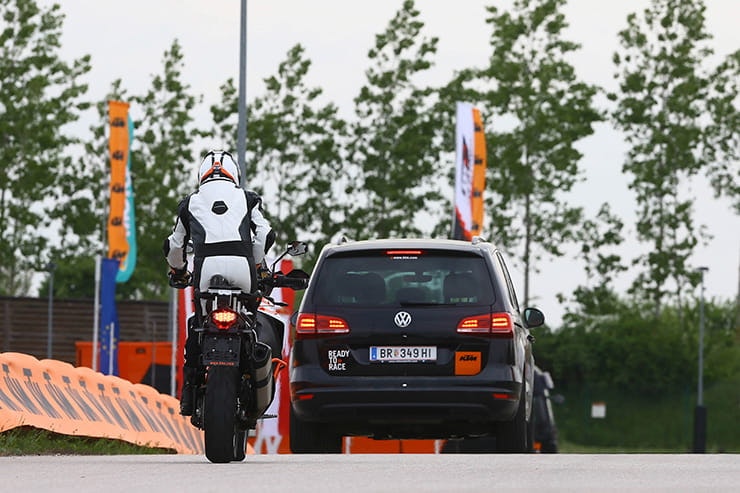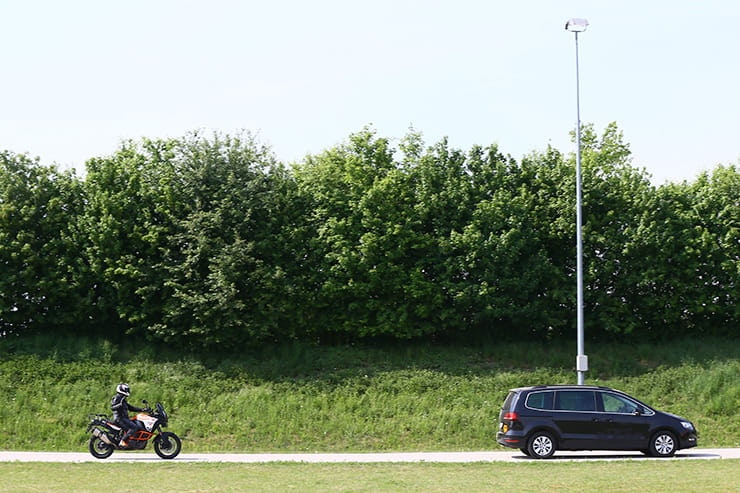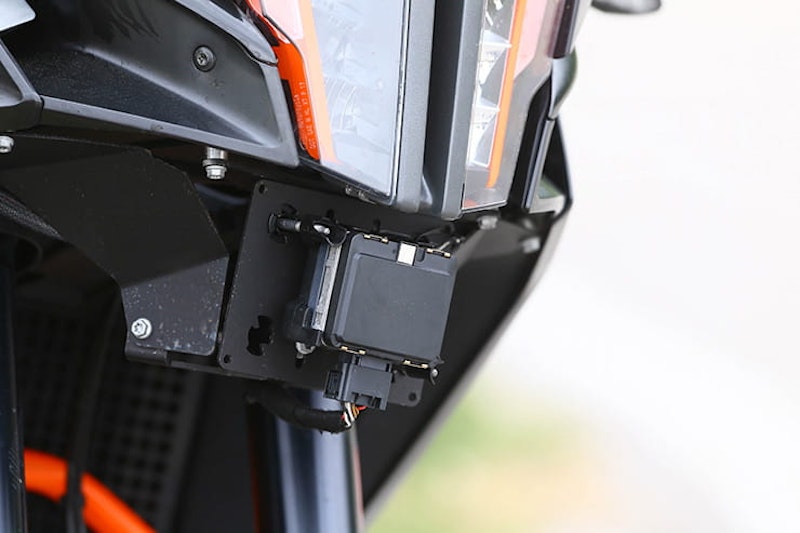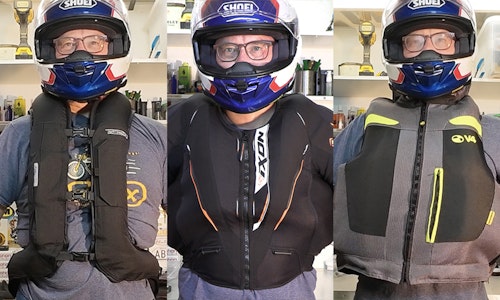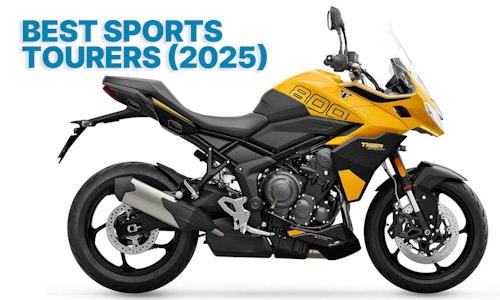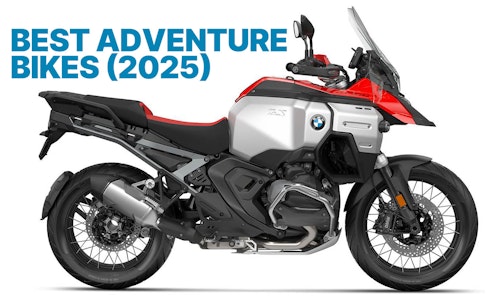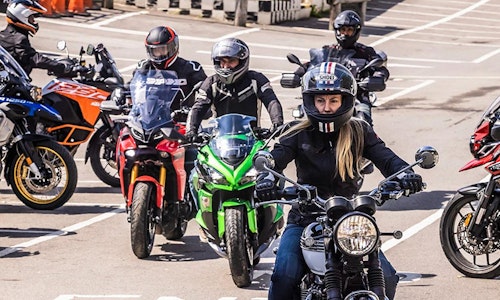KTM to introduce front and rear sensor technology but “not for next year”
By Michael Mann
BikeSocial Managing Editor. Content man - reviewer, road tester, video presenter, interviewer, commissioner, organiser. First ride was a 1979 Honda ST70 in the back garden aged 6. Not too shabby on track, loves a sportsbike, worries about helmet hair, occasionally plays golf and squash but enjoys being a father to a 7-year old the most.
08.05.2018
Above: As the car brakes so does the bike even though the rider clearly has no hand on the front brake nor foot on the rear brake
The speed at which motorcycle manufacturers has been developing clever safety features that don’t detract from performance or riding enjoyment over the last two decades has led to some revolutionary tech, plenty more switches on the handlebars, plenty more lights on the screen as well as a raft of acronyms to remember. Not only remembering what they stand for but what they actually do.
And as we learned this week in a trip a testing facility used by KTM in Austria this week, two more will be working their way onto production models from the firm who dress in orange in the near future; ACC and BSD.
Better known as Adaptive Cruise Control and Blind Spot Detection, both are sensor-based technology designed to prevent collisions from the front and rear respectively. As the two systems continue to be tested and developed, KTM’s Vice President of R&D, Gerald Matschl, told us they are “still in development” and “not for next year”, as he prepared to demonstrate them both in our presence. Riding firstly behind and then in front of a people carrier, Matschl took his right foot away from the rear brake and right hand away from the throttle while the bike slowed and accelerated in accordance with the vehicle’s behaviour.
Above: the prototype KTM 1290 Super Adventure hosts the sensor underneath the headlight
Similar to the systems found in modern day cars, the KTM sensors are found on the front of the bike and are triggered when cruise control is activated at speeds over 30kph (18.6mph). The vehicle in front is detected and once locked on the speed of the bike is then controlled via automatic throttle and braking management. If the vehicle brakes suddenly then the system will adjust the speed of the bike accordingly to maintain the pre-set gap. Currently this is a standard 2-second gap but in the future when the prototype completes its testing this gap can be adjusted by the rider.
Should a situation occur where a collision is likely or even imminent then, once thoroughly tested and developed, the ACC system will be able to respond faster and brake harder than any rider.
Above: KTM’s VP of R&D, in charge of ACC and BSD.
Said Matschl, “Usually there is a two-channel integral braking system but because of the requirement of a higher deceleration, for ACC, we also activate the front brake.”
A shorter distance radar will be used to detect vehicles moving in from the rear. Again, similar to many modern days cars, the system alerts the rider to a vehicle in their blind spot by illuminating three amber LED lights embedded into the mirror as well as a notification on the TFT dashboard.
The LED lights are embedded in the rear view mirror.
